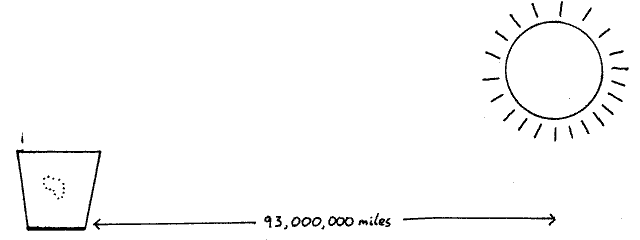
by Duncan Collis and Anthony Day
This article is a brief, informal summary of the main details of a proposed new power source which the authors feel could revolutionise the field of subterranean illumination. The original idea for this new power source was conceived following a lengthy discussion at the 1995 AGM of Cambridge University Caving Club of the relative advantages and disadvantages of the various conventional battery types. It must be stressed, however, that this report represents only preliminary developments, and that, in this capacity, can only convey a qualitative sense of the possible capabilities of the lighting system under development. It is anticipated that developments in this exciting research will be followed closely by the caving and scientific communities, and that this article will form the first of a series of development reports delineating the progress made in the realisation of the expected benefits of this new lighting system.
Advantages of the system identified so far include:
The basic principle behind this marvellous new invention is based on the observation that, by inserting electrodes made of different metals into many different varieties of fruit or vegetables, a small potential difference is developed across these electrodes. From this stems the theory of Potato-Powered Caving (PPC).
The prototype cell designed by Collis and Day consists of a variable number of potatoes mounted around the caver's belay belt into which zinc and copper electrodes may be inserted. This gives a working voltage of 1.8V per potato. It was decided to continue using the tried and tested Oldham headset. The amount of light this system produces clearly depends on the rating of the bulb and the number and variety of potatoes used, but a typical PX5 consisting of four King Edward's and a Jersey Royal when connected to a 0.7A bulb reliably gives 0.1s of light. This is a significant improvement on the performance of many of the club FX2s.
Experiments were conducted to determine the effect that changing the variety of potato might have on the capacity of the cell. The results are tabulated below:
| Potato type | King Edward's | Jersey Royals | Maris Piper | Blue & White stripey ones from Tesco |
|---|---|---|---|---|
| 1 Potato | 3.9 | 4.1 | 3.1 | 4.4 |
| 2 Potato | 7.4 | 7.7 | 6.9 | 10.8 |
| 3 Potato | 11.0 | 11.3 | 10.4 | 17.0 |
| 4 | 15.1 | 15.9 | 14.8 | 23.2 |
| 5 Potato | 19.2 | 19.5 | 18.1 | 29.6 |
| 6 Potato | 23.8 | 24.2 | 23.1 | 35.9 |
| 7 Potato | 28.1 | 28.7 | 27.2 | 42.8 |
| More | some | some | some | lots |
Table 1 - Cell capacity data for four different varieties of potato (in Microampère-hours)
Recharging the potato powered cell is a lengthy but simple process requiring only the bare minimum of equipment. A diagram depicting a typical simple charger is given below:

Figure 1 - Charging method for potato powered light (plant pot not to scale)
The advantages of PPC over traditional methods of lighting are obvious, but there are also a number of disadvantages. Foremost amongst these is the bulk of the cell. A simple calculation shows that in order to provide light for three hours, a cell comprising 5.4×105 potatoes is required, which is considerably more than a sack full and would be almost as heavy as the old CUCC drill battery. To alleviate this, the authors are currently investigating the possibilities of filling an old Oldham box with SMASH, and expect to present the results of their findings in the next issue of Cambridge Underground, due out in 2015.
This is a fast moving field of research, and there are already plans to replace the Oldham headset with a light emitting potato. These are readily available on the west Cumbrian coast, but may also be more cheaply imported from the Ukraine. There are also plans to investigate the possibility of replacing potatoes with lemons, though this design raises clear safety issues. Cavers must be aware that AN ACID RESISTANT (POLYESTER) HARNESS MUST BE USED IN CONJUNCTION WITH A LEMON POWERED LIGHTING SYSTEM.